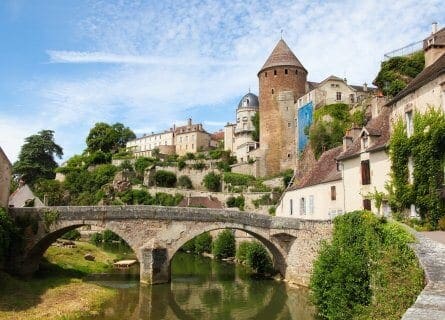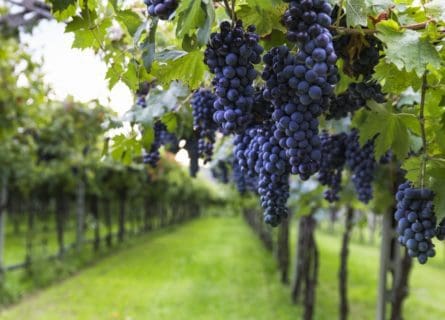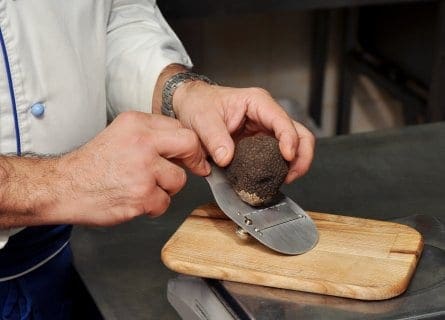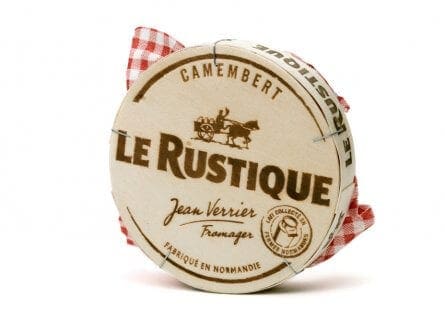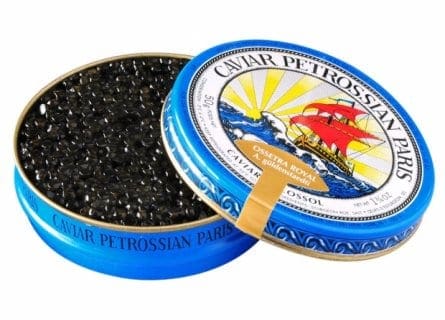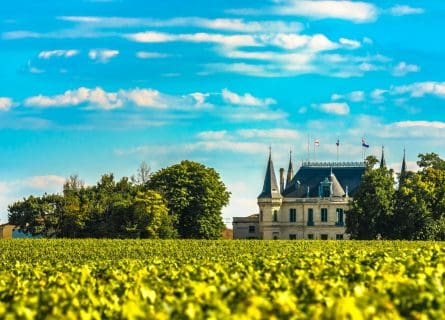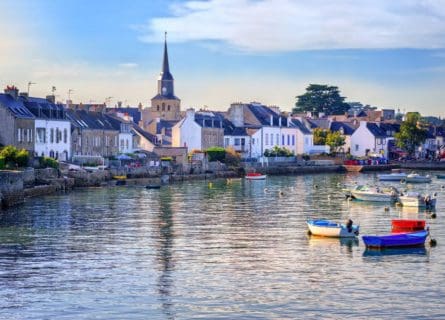
Aix-en-Provence Travel Guide
Discover Aix-en-Provence: Where History Meets Mediterranean Charm!
Few other cities in the Provence region offer as much delight and wonder as Aix-en-Provence. For a start, the region’s former capital is a vibrant and dynamic international student city, with a university that dates back to 1409 and the nightlife that goes with it. The central boulevard, the Cours Mirabeau, is filled with stately mansions, trees, and fountains, a fitting representation of a city that manages to be both grandiose and graceful but also exciting and provocative. Anyone who has experienced a heavy night out in the beautiful, lively old quarter can vouch for that! Aix-en-Provence is a major bastion of local tradition and culture; its museums, squares, and monuments are among the region’s finest. It is merely an unmissable destination on your Provencal adventure.
Like most southern French towns and cities, Aix-en-Provence owes its origins to the Romans, who invaded France (then known as Gaul) in the last century BC. History records that the Roman Consul Sextius Calvinus founded the settlement in 123 BC. He was attracted by a nearby thermal spring, which would form the basis of the settlement’s prosperity and renown. This, combined with its excellent location on a major trading route through southern Gaul, ensured that Aix-en-Provence rapidly grew in size and importance.
The settlement prospered for several centuries under Roman rule and attracted merchants, traders, and pilgrims who would pass through Aix-en-Provence on their way to Rome. At the height of its importance in the 4th century AD, the city became the Gallia Narbonensis Roman province’s capital, which included what we today know as the Provence and Languedoc regions. There seemed to be no end to the city’s ambitions.
However, Aix-en-Provence’s fortunes dramatically changed for the worse following the collapse of the Western Roman Empire. A series of attacks by the Lombards, Visigoths, and Saracens did untold damage to the city. Most Roman architecture was destroyed. Visigoth tribes finally captured what was left of Aix-en-Provence in 477. They kept control until competing Saracen forces claimed the city for themselves in 731 – they were ousted by the Frankish ruler, Charles Martel, in 737. Aix-en-Provence was in ruins.
Over the following centuries, the city remained a provincial backwater, losing its wealth and architectural heritage due to the conflicts that followed the Roman Empire’s collapse. Its regeneration came in the Middle Ages when Aix-en-Provence was once again made a regional capital in the 12th century. The fabled Counts of Provence, most notably the last Count, Rene, re-established its importance as a dynamic artistic and trading center, constructing new buildings, including an impressive Palace, replacing the ones destroyed by the Barbarian invasions. Rene’s father, Louis II of Anjou, also bequeathed a great legacy to Aix-en-Provence, opening the first university in 1409. It remains an important historical landmark and a thriving center of learning today.
During this period, Aix-en-Provence was also caught up in the hostilities between the Capetian rulers of Paris and the Anglo-Normans, known as the Hundred Years’ War. This terrible conflict would rage until the middle of the 15th century and claimed many lives.
Following Count Rene’s death, Aix-en-Provence lost its sovereignty and became part of the broader French Kingdom in 1487. The King, Louis XII, established a formal parliament in 1501, which governed the city for several centuries until 1789. A golden age dawned on Aix-en-Provence, as successive French Kings did much to cement the city’s reputation as a critical Court City. However, it was not unaffected by the 16th-century Wars of Religion between French Catholics and the Huguenots (Protestants), as the city sided with the Catholics. A real spirit of optimism dominated the 16th and 17th centuries.
The 17th century saw Aix-Provence endowed with many elegant buildings and monuments. A growing middle class emerged, attracted by the city’s prosperity, and with their newfound wealth came mansions, cathedrals, and public squares. This remarkable transformation of the historic central area was dominated by pulling down the old Roman ramparts and replacing them with a broad, mansion-lined boulevard called the Cours Mirabeau. It remains the city’s most charming street – indeed, Aix-en-Provence was riding an unparalleled wave of prosperity.
This golden age continued unabated until the French Revolution in the 18th century. After the Revolution, Aix-en-Provence was relegated to a mere “sous-prefecture,” meaning a sub-administration city whose importance diminished. The 19th century’s great industrial revolution also bypassed the city. Although Aix-en-Provence remained a vital center of learning, art, and culture, Marseille became Provence’s de facto economic capital. Indeed, the famous Post-Impressionist artist Paul Cezanne was born in the city in 1839. His works are today much-appreciated globally, particularly his paintings of the luminous Provençal landscape.
The 1st and 2nd World Wars outbreak did not significantly affect Aix-en-Provence; in the First World War, the fighting never reached the city; the Trench War was played out in northern France. During the Second World War, Aix-en-Provence formed part of Vichy France, a puppet state that acted for the Nazis during the conflict.
Like all European cities, Aix-en-Provence has experienced both prosperous and trying times. But despite such hardships, the city’s sense of optimism and joie de vivre has prevailed since the 1960s. A vibrant economic and cultural life has attracted thousands of students, and the younger generation is searching for job prosperity and an excellent quality of life. Its beautiful squares, parks, and palaces contribute to Provence’s popular and apt image as a holiday paradise, drawing millions of visitors each year in search of historic villages and dramatic landscapes. But if you tire of such beauty, fear not, for Aix-en-Provence has enough lively squares, bars, and restaurants to satisfy any night owls and gourmets. Welcome to Aix-en-Provence – The South of France’s undisputed City of Light.
-
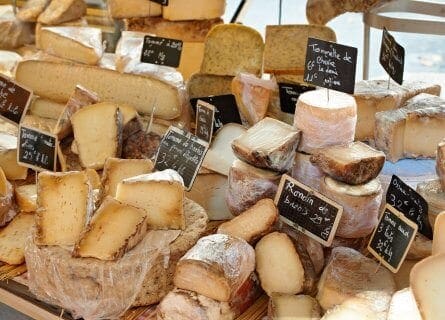
Cheese for sale in local market, Aix Gastronomy & Wine
It’s a very heady experience to take in Aix-en-Provence’s smells, sights, and sounds of a food market. Tables sag under piles of braided pink garlic, colorful fresh peppers, tomatoes, eggplants, courgettes, and asparagus all tantalize the taste buds. Fresh herbs and lavender fill the air with their pungent scent; locals playfully jostle for prime position to snap up the freshest offering of the day. Provencal cuisine invokes all the classic flavors of the Mediterranean, including fantastic seafood (oysters and mussels are a particular highlight), freshly caught fish, and the legendary Bouillabaisse fish soup, which originated in Provence. And then there is the local olive oil, some of Europe’s most delicious and potent.
Eating out in Provence is rarely about pomp and ceremony; chefs usually prefer to use only the freshest, local ingredients to craft homely classics, but, of course, more avant-garde cooking is found in cities like Aix-en-Provence. Lamb is a kitchen favorite; the best comes from the Camargue, where lambs graze on the herbs and salt marsh grass. Summer fruits are another major treat; Provence supplies France with the first of the season’s peaches, cherries, melons, and apricots.
Aix-en-Provence is simply full of good restaurants today. Some traditional dishes you will undoubtedly encounter are Bouillabaisse, an assortment of local seafood flavored with tomatoes, saffron, and olive oil; Salade Niçoise, a salad of lettuce, green beans, tomatoes, black olives, eggs, and anchovies, and calisson, a traditional biscuit made from almond paste, flavored with orange and melon. The city’s old quarter groans with restaurants; one of our favorites is L’Aix Quis, a stylish restaurant that serves the right mix of fish and meat dishes and has cemented its reputation as one of the top culinary destinations in Aix.
Provence has been making wine for centuries, but it is only relatively recently that its reds – other than Bandol – and whites have been held in high regard. And while delicious rosé remains the mainstay of Provencal wine production, exciting reds, and some superb whites have emerged over the last 20 years or so. Cotes de Provence is the most commonly seen appellation, home of sun-kissed rose that perfectly suit the region’s climate. Based on the Mourvedre grape variety, Bandol can be divine: intense, spicy, aromatic, and long-lived. Bellet is another exciting sub-region, offering some well-structured reds, lightly floral, nutty whites, and gorgeous rose. But whatever you take a fancy to, you can be sure that local restaurants and bars are well-stocked with a wide variety of wines from within the region. Locals like to drink local, and we suggest you do too.
A Guide to Gastronomy and Cuisine of Provence: Read more
Nearby Wine Regions
-
 Explore the enchanting Provence wine region and discover the symphony of sights, aromas, and timeless wines it offers. Read more
Explore the enchanting Provence wine region and discover the symphony of sights, aromas, and timeless wines it offers. Read more -
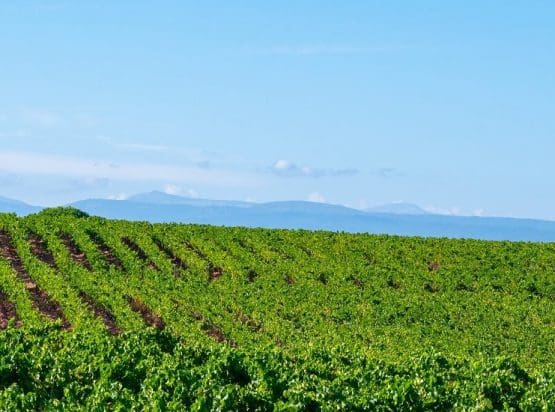 Discover Coteaux d'Aix-en-Provence: Explore Provence's Second Largest Wine Zone, Indulge in Rosé Delights, and Embrace Hedonistic Charms. Plan Your Trip! Read more
Discover Coteaux d'Aix-en-Provence: Explore Provence's Second Largest Wine Zone, Indulge in Rosé Delights, and Embrace Hedonistic Charms. Plan Your Trip! Read more -
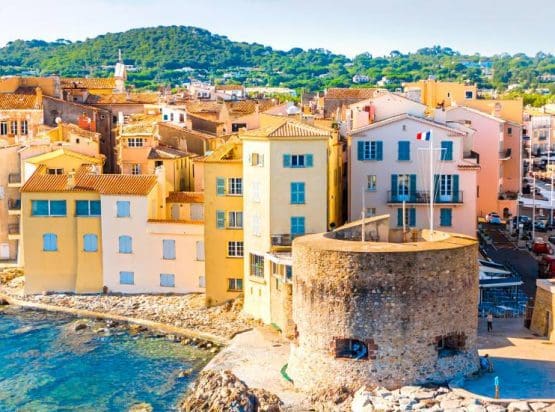 Cotes de Provence is the largest wine producing appellation in the Provence wine region, with over 20,000 hectares under vine. Read more
Cotes de Provence is the largest wine producing appellation in the Provence wine region, with over 20,000 hectares under vine. Read more
Highlights
-
Atelier Paul Cezanne
The city’s most famous resident, Paul Cezanne, was one of France’s leading artists, celebrated for his Post-Impressionist style. His studio, designed by Cezanne himself, is as he left it when he died in 1906. It remains, therefore, a must visit attraction for any art lover; his possessions still clutter the room, including Cezanne’s beret, bowler hat, and still-life drawings. Standing in the atelier, in the knowledge that Cezanne completed the celebrated Jardinier Vallier and his final Grandes Baigneuses here, is a very humbling experience indeed.
-
Musee Granet
Aix-en-Provence’s main museum is actually surprisingly light on Cezanne’s paintings as history records that the curator took against the Post-Impressionist artist. It is still worth a look, however, as Francois Granet left his collection of French, Italian and Flemish paintings to the city. Works by other Provencal artists are also displayed, to complement the few of Cezanne’s paintings that did make it in.
-
Cathedral St-Sauveur
A gem in the city’s old quarter, the Cathedral St-Sauveur creaks with history. Its most impressive sight is the triptych of the fabled Burning Bush that Moses saw, designed by Nicolas Froment.
-
Camargue
This flat, sparsely populated land is one of Europe’s major wetland attractions and natural history sites. Extensive areas of salt marsh, lakes, pastures, and sand dunes cover a vast 140,000 hectares. The native and majestic white horses and black bulls are tended to by the region’s cowboys, numerous seabirds and wildfowl also occupy the region. Such a diverse collection of flora and fauna more than merits a day trip from Aix-en-Provence. The Pont-de-Gau offers wonderful views and photograph opportunities aplenty.
Recommended for you
More information
If you would like us to customize an exclusive luxury tour, contact us and let us know your travel plans. We offer luxury food and wine tours for private groups of a minimum two guests. In addition, all of our private, chauffeured tours are available year-round upon request.


